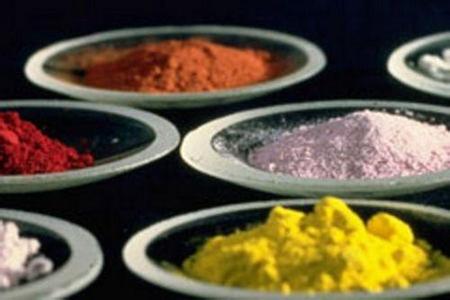 According to statistics, from January to August this year, the export volume of rare earths in the Inner Mongolia Autonomous Region increased and decreased. Exports reached 3392.2 tons, an increase of more than 80% over the same period of last year; and the average export price was 11,000 US dollars per ton, down 59.3%.
According to statistics, from January to August this year, the export volume of rare earths in the Inner Mongolia Autonomous Region increased and decreased. Exports reached 3392.2 tons, an increase of more than 80% over the same period of last year; and the average export price was 11,000 US dollars per ton, down 59.3%. Since the beginning of this year, China’s rare earth exports have risen. As Inner Mongolia Autonomous Region, a major province of China’s rare earth, rare earth exports have also increased substantially. In August alone, the export of rare earths in Inner Mongolia exceeded 800 tons, an increase of more than 30% compared to the previous period; while the average export price for the same period was US$0.80 per ton, which fell by more than 60% year-on-year.
In the first 8 months, 1 the major reasons for the sharp increase in exports of rare earths from Inner Mongolia were the low base in the same period of 2012, of which no exports were made from February to May; the second was all exports by general trade. The export of Inner Mongolia's rare earths increased by more than 80%; thirdly, it was all exported by foreign-invested enterprises, private companies, and state-owned enterprises; and 40% was exported to the United States, France, and Japan, accounting for more than 80% of total rare earth exports in Inner Mongolia over the same period. . Among them, exports to France decreased by nearly 60%, and exports to Japan increased by 1.4 times.
In the first eight months, the main reason for the increase in the export volume of rare earth rare earth in Inner Mongolia was that the increase in the national quota increased the export volume, and the lack of demand was the biggest factor constraining the export prices of rare earths. On the one hand, in 2013, the Ministry of Commerce announced that the first batch of export quotas for rare earth export enterprises was 1811 tons of Baotou Iron and Steel Group Corporation, including 553 tons of Baotou Steel's rare earths. Last year, Baotou Steel's rare earth metal was unexpectedly rejected due to environmental problems. In 2012, the export of rare earths in Inner Mongolia was greatly reduced, and it was even stopped from February to May. The lower base laid the foundation for the increase in exports of rare earths this year. On the other hand, from the resource to the material production, the status quo of overcapacity is present. The field is even several times over. With the release of foreign production capacity, the United States and Japan continue to weaken their dependence on Chinese rare earth raw materials.
It is worth noting that when the demand and prices are at a low level, the glut of rare earth industries is a foregone conclusion, and the performance of many companies is unavoidable. According to data from the China Rare Earth Industry Association, China's production of rare earth permanent magnetic materials has reached more than 80% of the world's total output. Hydrogen storage materials account for about 70% of the world's total output. Luminescent materials output exceeds 50% of the world's total output. These rare earth new materials consume 66% of the total rare earth consumption of rare earths. China has become a major consumer market for rare earth raw materials. Although China is a large exporter of rare earths, the application of high-end products and high-end technologies lags behind, and the right to speak and pricing in international markets needs to be strengthened.
To this end of the industry recommendations: First, the upstream and downstream companies are symbiotic and co-prosperity, to maintain reasonable raw material prices, in order to achieve a win-win situation in the development, production and end-use industrial chain of rare earth resources; Second, the technical shortcomings severely constrain China The development of rare earth industries and the development of rare earth application technologies with independent intellectual property rights are the primary issues for the development of China's rare earth industry and improvement of its own right to speak. Third, the establishment of a rare earth trading platform to increase the international pricing power of rare earths in China, and promote the establishment of global rare earth trading The fourth rule is to extend the industrial chain, establish a pricing mechanism, and enhance the bargaining power in the international market.
Blister Welding Wire,Purity Lead Free Solder Wire,Pb Free Solder Copper Tin,Lead Free Pure Tin Solder Wire
NINGBO XIHAN TIN SOLDER CO.,LTD. , https://www.soldertop.com